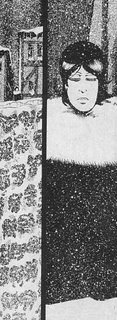It took me awhile to get on the Paypal bandwagon. I've been using ebay in various capacities since 1997 but it wasn't until a few years ago that I finally broke down and started accepting Paypal payments for auctions. Previously, as someone who didn't have a traditional bricks-and-mortar store and no credit card merchant account, I was stuck relying on money orders and the vagaries of cross-border postal systems. Now that payment is virtually instantaneous and I don't have to truck piles of weird money orders to my bank every week I wonder how I ever got along without Paypal.
On the surface it seems to be the most flexible and reliable online payment technology and my prediction is that Paypal (or whatever it evolves into) will be one of the largest banks in the world in another 10 years.
It's ease of use and popularity
(as documented here) are legendary , which makes it all the more puzzling why it hasn't been more widely adopted for other forms of e-commerce.
My own largely postitive experience (I'll get to the negatives in a minute) and general love of Paypal received some food for thought recently when I read the Joey Manley interview in the latest
Comics Journal (Issue #277). How is paypal being experienced by the online comics communtiy? Manley, the webcomics guru and founder of several successful webcomics sites and services (Modern Tales, Serializer, and the new AdultWebcomics) was interviewed by the Journal's Dirk Deppey about the future of comics on the web. Many of Manley's sites accept some form of paypal payments, and Manley explains his basic preferences to Deppey, an otherwise uninhibited and tech-savvy webhead, not to mention crac-a-jack journalist and editor:
DEPPEY: I've even got problems with Paypal. I refuse to get a full account with them because I won't give them my bank numbers and whatnot.
MANLEY: Well, that's understandable. We've never attempted to sell anything by micropayment, and there's a reason for that. I don't have a lot of faith in that model for the kinds of things I try to do. I do have a lot of faith in the idea that a certain kind of material will thrive online if it can be supported by its readers directly forking over cash. That can be in the form of print compilations, that people buy, that can be in the form of T-shirt sales, or it can be in the form of subscriptions, or possibly micropayments. I haven't seen a micropayment system that works for me either, and think it's unfortunate in some ways that the failure of Bitpass to really set the world on fire has sort of discredited the underlying idea of micropayments for everybody, always.
Manley has a well-documented history as a participant in the micropayments debate and criticisms of Bitpass. A few years ago, when micropayments advocate and cartoonist Scott Mccloud published an
essay on the future of webcomics and micropayments, he started a
debate on the viability of his proposed model for comics ecommerce. Manley weighed in with a general dismissal of micropayments, describing them as unviable for less-popular content (he also expressed doubts about advertising). But Manley has kept an open mind, investigating
new options as they appear, including Paypal competitors like
Clickandbuy. Nowadays, Manley's websites mostly follow a subscription model balanced with lots of free content, and flexibility given to the users of his products.
The artists that work with Manley, including Guelph's own
Jay Stephens, are generally enthusiastic. Achewood's chris onstad is a recent convert to the Manley business plan, moving a selection of his work to Webcomicsnation's subscription-only platform:
"Webcomics Nation is the perfect solution for hosting subscriber material,” said Onstad. “The content management interfaces are extremely well-designed, and the whole product is very well thought out. From uploading art to managing payments, it’s very well integrated. It’s the best system I’ve seen for anyone trying to make a living off of their comics."
As well, Paypal announced last year it would be
experimenting with micropayments, adding a new fee scale and making the system more flexible.
Paypal still has many drawbacks. One of which, as Manley recently noted on his
blog, is that Paypal doesn't allow payments for adult content, making the roll-out of his latest porn/erotica-comics venture a bit problematic (Paypal is really missing the boat there, refusing to cash in on one of the biggest revenue sources on the web).
Additionally, the system of fees, privacy issues, and (at least for Canadians) problematic exchange rates are still big stumbling blocks, especially for small mom-and-pop type users who accept Paypal payments. Still, at least for now (and Google has announced a competing sertvie,
Gbuy), it's the only game in town.










































